30% off Ski Packages!
25% off Ski Equipment!
30% off Ski Apparel!
Skis waxed and bindings mounted free of charge when purchased as a package!
For purchases made online, you will be contacted by our service department when your skis are ready for pickup.
Choosing Skis
Classic is the most recognizable of the cross-country skiing disciplines, and is likely where you’re starting out if you’ve never skied before. Classic skiing allows the skier to ski in a linear pattern on tracks. Classic skis depend on sticky grip wax or a built-in grip pattern, either Skins or traditional Fishscale on the base. Classic skis intended for racing or high performance are going to be lighter, generally skinnier, and more expensive than ‘touring’ or recreational skis, which tend to offer more stability and better off-track performance.
Skate skiing is faster than classic skiing, and popular with cross-country skiers looking for a fast-paced workout on groomed trails. To support the need for a different technique, skate skis are generally shorter and feature a different ski geometry. Skate skis intended for racing are lighter and have narrower tips than ‘sport’ or recreational skis. They also feature a, faster base material that allows them to glide more efficiently than their recreational counterparts.
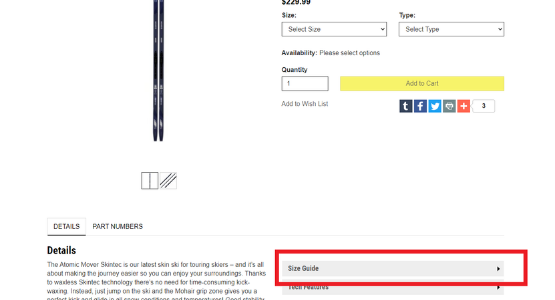
How to Select the Correct Size of Ski
Contrary to popular belief, choosing the correct size of ski is based off of skier weight first and then height secondary. For each length of ski that is manufactured within that particular model, there will be a recommended weight range for that length. For each ski available to purchase through our website, there is a size guide for that particular model of ski. You will find this size guide in the Size Guide feature tab on the right hand of the item's page on our website.
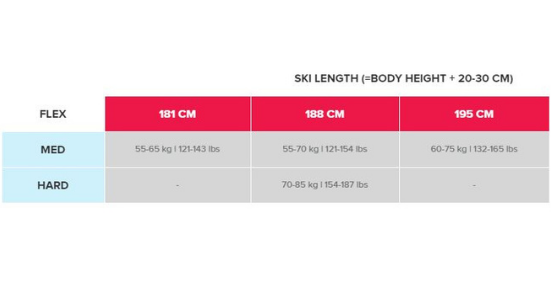
Sizing Cont...
Once the Size Guide feature has been located, you can expand the feature. From there you will be given a size chart with ski lengths and weight ranges for that particular model of ski. For example, if you weigh 165lbs, you would want to purchase the 194cm length of ski in the medium flex.
Choosing Boots
Classic boots prioritize low weight and flex in the outsole to accommodate the specific needs of classic technique. Classic boots are what you would use for any off-track skiing. Recreational 'touring' or Backcountry boots are roomier and warmer, while race boots are stiffer, narrower, cut a little lower, and often feature carbon instead of plastic soles.
Skate boots use a plastic or carbon cuff for additional ankle support and a stiff sole to create a powerful platform to push-off of when you’re skating. Recreational or ‘sport’ boots are roomier and warmer, while performance/race boots are stiffer, narrower, and often feature carbon cuffs and soles that make them very stiff and super lightweight. Almost all boots have a quick-lace system, a zippered lace cover, and a hook-and-loop or ratcheting ankle strap.
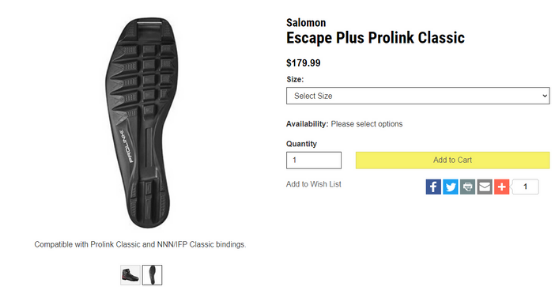
How to Select the Correct Ski Boots
Matching the outer sole of the ski boot to the correct binding interface is crucial to ensure boot and binding compatibility. All the boots on our website can be filtered for Classic and Skate boots. From there each boot page will have a secondary photo with a caption stating the type of binding that it is compatible with.
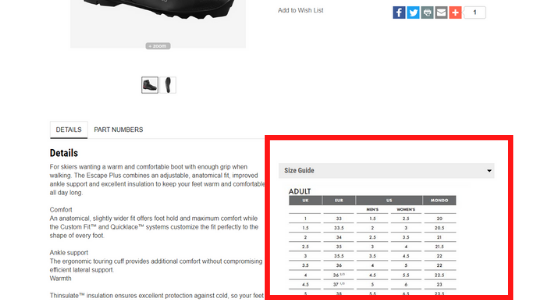
Selecting Boots Cont...
Additionally, each boot page on our website will have a size guide specific to that brand of boot. Simply expand the Size Guide feature to view the chart. Since you want a snug fit in a ski boot, do not consider sizing up as you would potentially do with a running shoe. We recommend purchasing your standard shoe size as most brands of ski boots opt for a wider toe box to account for the skier wearing various thickness's of socks throughout the ski season.
Choosing Poles
There is no differentiation between a classic pole and a skate pole, however you will want to go with a length of ski pole appropriate for the type of skiing that you will be doing this season. Generally speaking, a classic skier will want their poles to come up between their armpit and their shoulder in height. A skate skier will want their poles to come up between their chin and their ear lobe in height.
Entry-level poles are generally made from aluminum or fiberglass composite and are a economic option for the classic skier. Higher end poles which are often made of carbon fiber will be a stronger material with less flex, and lower weight, allowing the skier to apply more force to the poles as they push off from their skis.
There are many grip and strap options available. Entry-level poles often have simple one-piece plastic grips and adjustable nylon straps, while more advanced poles have grips made from rubber and cork. Some higher end poles will have cradle-style straps that cinch around your palm for increased control, and can be removed quickly from the grip to save the hassle of frequent undoing and redoing.

How to Select the Correct Ski Poles
Whether selecting a pole for classic skiing or for skate skiing, every pole listed on our website will come equipped with a Size Guide feature. Once you have expanded the Size Guide you will see a chart showing the length of pole you would want to purchase for either classic skiing or for skate skiing in relation to your height. Please note that all ski stock listed on our website is in centimeters.
Choosing Bindings
Prolink: The new Prolink system from Salomon/Atomic seeks to bridge the gap between SNS and NNN systems. The Prolink bindings are compatible with both Prolink boots (from Salmon and Atomic) and NNN/IFP boots, giving you more choices. Please note that Prolink Shift Bindings are only compatible with PSP or Prolink Shift Plate equipped skis. Please read below for more information on bindings.
NNN/IFP: NNN and IFP bindings clamp onto a bar at the front of the boot, and feature two ridges running the length of the binding that correspond to the sole of the compatible boots. Please note that IFP bindings are only compatible with IFP equipped skis. Please read below for more information on bindings.
SNS Pilot: SNS Pilot bindings differ from other cross-country bindings in that they have two points of contact with the boot. They are therefore only compatible with SNS Pilot boots that have the two bars embedded in the sole.
SNS Profil: SNS Profil bindings have the same single-bar attachment point as NNN bindings, but the binding plate has a single wider ridge running down the middle that interfaces with a corresponding groove on the sole of compatible boots. These bindings work with any SNS boot (Profil or Pilot).
Keep in mind that the bindings on classic skis and skate skis are different as the flexor (a rubber bumper in front of the boot) varies in rigidity between the two ski styles. It also varies depending on your technical skills. Entry-level bindings will be wider to offer stability and higher-end bindings are generally lighter and narrower.
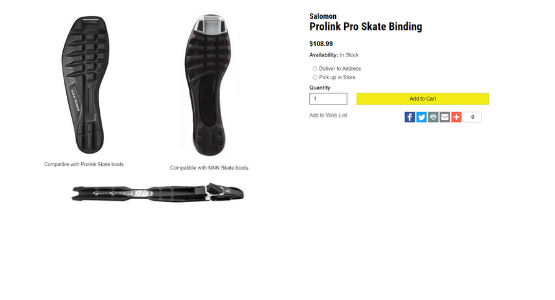
How to Select the Correct Bindings
Choosing a cross-country binding system can be incredibly confusing as there are 4 different types of cross-country ski binding systems. Not only that, but some bindings will drill directly into the core of the ski, whereas others require to be mounted to pre-installed plates that come stock on some skis. On our website, you will see secondary photos for each binding on our website. These photos will highlight the ski boot outsole (SNS Profil, SNS Pilot, NNN/IFP or Prolink) that is compatible with the binding being currently viewed as well as differentiating between the binding being for classic or for skate skiing.
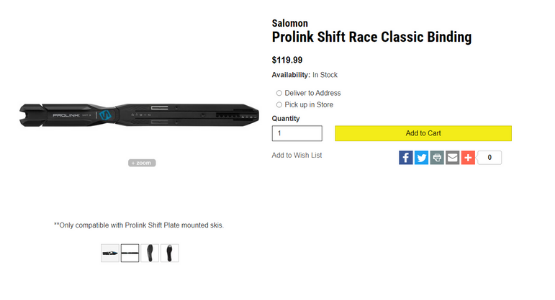
Selecting Bindings Cont...
You will also notice that some bindings listed on our website will note in the secondary photos if they require a pre-installed mounting plate to work with skis. In some cases, adaptor plates can be purchased to make drill in bindings compatible with pre-installed mounting plates. The same goes for the other way around, in some cases adaptor plates can be purchased that drill into the ski core, which would then make the ski compatible with a binding that slides onto a mounting plate, allowing the skier to adjust the position of their bindings.

